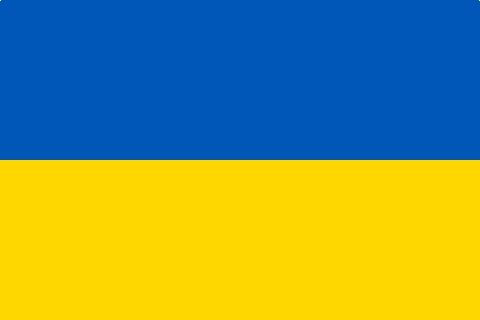
Search this site:


|
Search this site: 
Custom Search
|
 |
 |
||||
|
The image above is a photograph of the skyline of Edmonton, Alberta, where I live, which I myself took some years ago.
The city of Edmonton, like many cities in Western Canada, is home to a significant minority of Ukrainian origin. In the nearby town of Vegreville, also in Alberta, Ukrainian culture is celebrated by a giant metal sculpture of a Pysanka egg, which is an egg on which colored designs are painted by a traditional method involving covering parts of the egg to which a specific dye is not to be applied with wax. These eggs are crafted for Easter celebrations. This sculpture was unveiled in 1973, in association with national celebrations of the centennial of the founding of the Royal Canadian Mounted Police. 
Also, therefore, it should not be regarded as surprising that Edmonton is also home to a monument, pictured at left, intended to serve as a memorial to those who lost their lives in the Holodomor, a famine deliberately created in Ukraine by Josef Stalin. This monument, unveiled in 1983, was Canada's first public memorial to the Holodomor. (Incidentally, as I live in Edmonton, it should not be surprising that the picture at left is my own work; but for a while initially, as I was both busy and feeling indisposed, I had been using a Creative Commons-licensed image instead. But I finally managed to pass by City Hall.) |
|||||
 |
 |

|
Click on the Ukrainian flag to the left for a timeline of events relating to the current tragic events in that country: this timeline covers three major subjects, past activities of the Russian state aimed at suppressing the Ukrainian language and national identity, the history of the fall of the Soviet Union, including the transfer of power from Boris Yeltsin to Vladimir Putin, and the current conflict in Ukraine as well as the previous invasions of Crimea and later Donetsk and Luhansk. After finally locating a reference on the Web about how Gary Kasparov had to give up his bid for the Russian Presidency on December 12, 2007 due to a contrivance, I was reminded how the novel 1984 pointed out that the "memory hole" was one of the things that made people vulnerable to the lies of tyrants. It helped that I had also recently read a transcript of a speech by Vladimir Putin which included the lie that Russia has a genuinely democratic and representative political system which just happens to be different from the Western one. |
||||
|
From inside, some comments I had made concerning the recent conversation between Volodomyr Zelensky and Donald Trump and J. D. Vance at the Oval Office: After hearing the encouraging news that European governments are stepping up to the plate, and preparing to increase their aid to Ukraine, I engaged in some further reflection on these events. It seemed to me that there was a real danger that some people in Europe would resent having more of their tax money go to Ukraine, because one man couldn't have controlled himself just a little more. However, since the "disrespect" consisted of "litigating" the issues around the conflict, rather than raising his voice or any other actual disrespect, there is another important factor to consider. Not just that this diminishes the blame Volodomyr Zelensky bears for the contretemps, because that wouldn't matter to people focusing on the practical matter of their tax dollars. No; instead, we must look beyond what actually happened, which we had the chance to see, to also think about what could have happened, but didn't. Because what Zelensky would have had to have done to placate Trump and Vance further would have been to indicate agreement with the Putin talking points they were presenting. And where's the danger of that? Right when they come back to Zelensky with this wonderful peace agreement they were able to obtain from Vladimir Putin - which he would have to sign, or else make himself out to be a liar, because that would show he didn't really believe all those things he had assented to in this meeting. So Zelensky didn't fall into their trap; he avoided the deadliest prong of a two-pronged trap that was designed so that there was no way to completely escape it. Integrity isn't a stupid move: it's the only winning strategy. |
|||||
|
Click here for some reflections of mine on the serious crisis in which this situation has placed the world as I see it. |
|||||
|
The article at this link recounts the facts about Donald J. Trump's mishandling of the COVID-19 pandemic; it was even worse than I remembered. |
|||||
|
On Monday, March 17, 2025, Philippe Baptiste, French Minister of Education and Research, in a statement to Agence France-Presse, claimed that a French scientist, who he did not name, travelling to the U.S. to participate in a conference taking place near Houston, Texas, was detained, and then expelled from the U.S., and also informed that criminal charges against him were considered but not pursued, due to "hateful and conspiratorial" messages about Donald Trump found on his phone. This has led to a very drastic decrease in tourism to the United States by Canadians. Some additional considerations are noted below, given that this could otherwise be considered an over-reaction to that news story. Because of Donald Trump's musings about making Canada the 51st state, even many Canadians of conservative views who might have viewed him favorably had changed their views of him, and thus could have been critical of him in messages to their friends. And, indeed, depending on how that develops, there's also the prospect of being interned as an enemy alien. Of course, this also requires the assumption that the scientists' messages in question were genuinely innocent expressions of opinion, and not the sort of thing that might legitimately excite the interest of the Secret Service. Other news stories about the Trump Administration are likely to have contributed to such a view, for example those about the conflation of protests about the dire situation of civilians in the Gaza Strip with anti-Semitism, leading to serious measures against a number of well-known American universities. |
|||||
 |
 |
|||

According to a news item of June 18, 2024, Justin Trudeau called out "Slava Ukraini!", which means "Glory to Ukraine", while outdoors in connection with an international summit on peace for Ukraine. One Russian propagandist reacted to this by calling our Prime Minister a "Bandera Nazi Thug". I checked on Wikipedia; while it is true that the slogan "Slava Ukraini!" was used by the OUN, it was not originated by them; it was used during Ukraine's ill-fated War of Independence from 1917 to 1921. And, of course, given that Ukraine had been under the heel of Stalin, and had just experienced the Holodomor, a more nuanced understanding of the OUN than simply dismissing them as Nazi collaborators is also in order. But in another sense, perhaps Justin Trudeau's outburst is not entirely immune from criticism. As "Slava Ukraini!" is the battle-cry of the Ukrainian soldier, echoing it, of course, is an entirely appropriate expression of solidarity with Ukraine. However, in its historic struggle against brutal and utterly unprovoked Russian aggression, Ukraine is already crowned with glory, whatever the outcome of the current conflict may be. Instead, we should be wishing for Ukraine things that either it does not have, or things that it does now have, but is in danger of not retaining. Let us wish Ukraine what it needs, not what it has in abundance. Thus, at right, I illustrate three additional Ukrainian phrases, in addition to "Slava Ukrainii!", Glory to Ukraine. They are: "Peremoha Ukrainii!", Victory to Ukraine; "Swobodu Ukrainii!", Freedom to Ukraine; and "Miru Ukrainii!", Peace to Ukraine! Welcome to my personal home page. There are many pages on this site concerning various topics of an entertaining, yet somewhat technical, nature that many visitors should find fascinating. The striking image on the entry page is from the section on the Mandelbrot Function. A Meditation for which I have found no place: When I was young, I had watercolor paint sets with perhaps six colors or twelve. But I had remembered seeing some with a great many colors, and I had always wanted one, but I never seemed to see a store with them on sale. These days, with the Internet, with the mighty search engine Google, and the marketplace of eBay, I had been able to solve the mystery of what those sets were and who made them. It turns out that the water color sets I was thinking of were made by a British firm by the name of "Page of London", and they came in many different sizes, with up to as many as 108 colors. They'll Be Rewriting All the Textbooks: Through a YouTube video, I learned of the following paper, published in Proceedings of the National Academy of Sciences: Evolution of the Iodine Cycle and the Late Stabilization of the Earth’s Ozone Layer by Jingjiun Liu, Dalton S. Hardisty, James F. Kasting, and Noah J. Planavsky. The discovery disclosed in this paper is this: Iodine, a natural consituent of the Earth's atmosphere, which, like the chlorinated fluorocarbons (CFCs) now banned, causes the breakdown of ozone in the Earth's atmosphere, was once present in the Earth's atmosphere in larger quantities than at present. This is due to the fact that only recently did the Earth's soil and oceans start absorbing iodine at a sufficient rate to prevent it from accumulating to a significant extent in the Earth's atmosphere. And this is the explanation of why plants and animals only colonized the Earth's land surfaces after they sat empty for about four billion years while life flourished in the oceans. This is what precipitated the Ordovician-Silurian extinction event. While Iodine is a solid at room temperature and pressure, water is a liquid at room temperature and pressure, not a gas either. However, water vapor is a constituent of our atmosphere: and, like water, solid Iodine still has a nonzero vapor pressure.
Contact Information and Notes |
||||
 |
 |
These pages now include advertisements. These advertisements make use of a cookie to serve advertisements based on your interests. You may disable this by visiting this web page.
Needless to say, any trademarks referenced are the property of their respective owners, and are used here only for purposes of identification.
This site is not approved by, sponsored by or affiliated with either Studio Foglio LLC, Airship Entertainment, Phil and Kaja Foglio, or any other present or future assignee of the rights to the creative works of Phil and Kaja Foglio.
Girl Genius is a registered trademark of Studio Foglio LLC. Agatha Heterodyne, Moxana, and the Silverodeon and all Girl Genius art, characters, design elements, logos, and related indicia are trademarks of, and copyrighted by, Studio Foglio LLC. The link banner above, containing items among those listed, is used by permission.
Copyright (c) 2000, 2001, 2002, 2004, 2005, 2008, 2010, 2011, 2012 John J. G. Savard